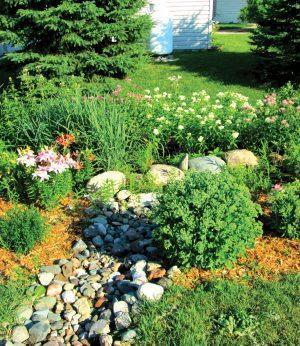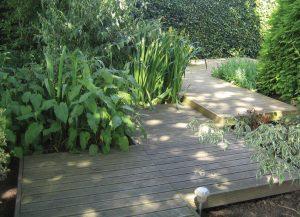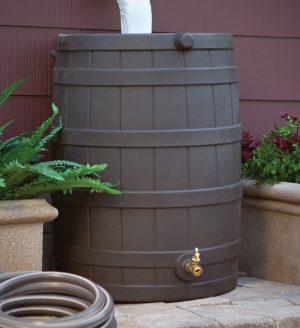Stormwater is nothing new to the residents of Tallahassee and their surrounding areas. Understanding cost-effective, environmentally conscious ways of working with stormwater has many benefits for homeowners and the community as a whole. Green infrastructure offers effective, economical, and aesthetically pleasing solutions while contributing to a better quality of life for community members and wildlife, while also protecting the water we depend on. Green Infrastructure solutions can be applied on different scales from landscapes to building structures. For homeowners in the Tallahassee area, these solutions include rain gardens, rain barrels, permeable surfaces, inverted landscapes, infiltration planters, trees, and other vegetated spaces.
It’s important to know where your water goes once it leaves your property. Water in Tallahassee and Leon County is delivered to one of twenty-five watersheds within the area. A watershed is a drainage basin that delivers stormwater to a specific waterbody such as a river, stream, lake or sinkhole. Stormwater runoff is a major contributor to water pollution in urban areas. In many cases water from parking lots, roads, and roofs is often routed into gutters, storm sewers, and other engineered systems to be discharged into a nearby watershed. Runoff carries fertilizers, heavy metals, chemicals, bacteria, and trash, which have grave impacts on waterbodies when directly discharged into them.
Green infrastructure solutions work to address the stormwater as close to the source as possible and mimic the natural water cycle process. These concepts use a variety of practices to restore some of the natural processes required to manage water and create healthier urban environments. Slowing the movement of water and encouraging absorption reduces the impact on built areas and promotes natural filtration of runoff. Green infrastructure solutions allow for water to absorb into the ground providing a natural process of filtering through soil and plants, or to be harvested for later use. There are many types of green infrastructure systems, some of which are quite simple in application to a home landscape. Rain gardens, rain harvesting systems, bio-swales, elevated boardwalks, and berms can be installed with minimal impact on a landscape while making significant impacts on the flow of stormwater, and the quality of groundwater. Solutions as simple as using excess leaves from your yard as mulch or implementing a vegetated space minimize the flow of water and allow for natural absorption while contributing to better air quality, and habitat for wildlife.
Benefits of Green Infrastructure on Private and Commercial Property
- Improves water quality at site, city, and watershed levels
- Reduction of discharge pollutants to waterbodies
- Alleviate impacts of urban stormwater on aquatic ecosystems
- Restores groundwater recharge and removes pollutants
The EPA notes that the use of plants in green infrastructure solutions improves air quality, which leads to significant public health benefits. The use of native plants into rain gardens, infiltration planters, or vegetated spaces allows for an increase in biodiversity within the urban landscape, and provides habitat for pollinators and other wildlife.
To learn more about green infrastructure solutions visit the Tallahassee Museum, where a showcase of rain gardens, bio-swales, vegetated zones, and elevated boardwalks are integrated into the landscape. The Tallahassee Museum has also partnered with TAPP to offer free workshops to the community. For upcoming workshops on how you can implement green infrastructure techniques into your property, visit http://tallahasseemuseum.org/calendar/
By Sheri Wesson
Public Relations
Carrabelle History Museum







